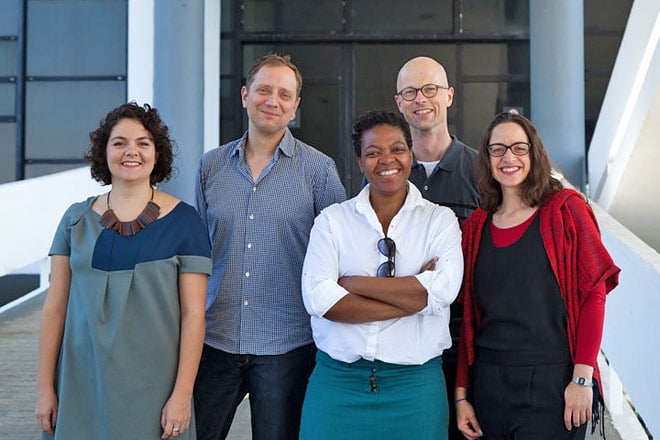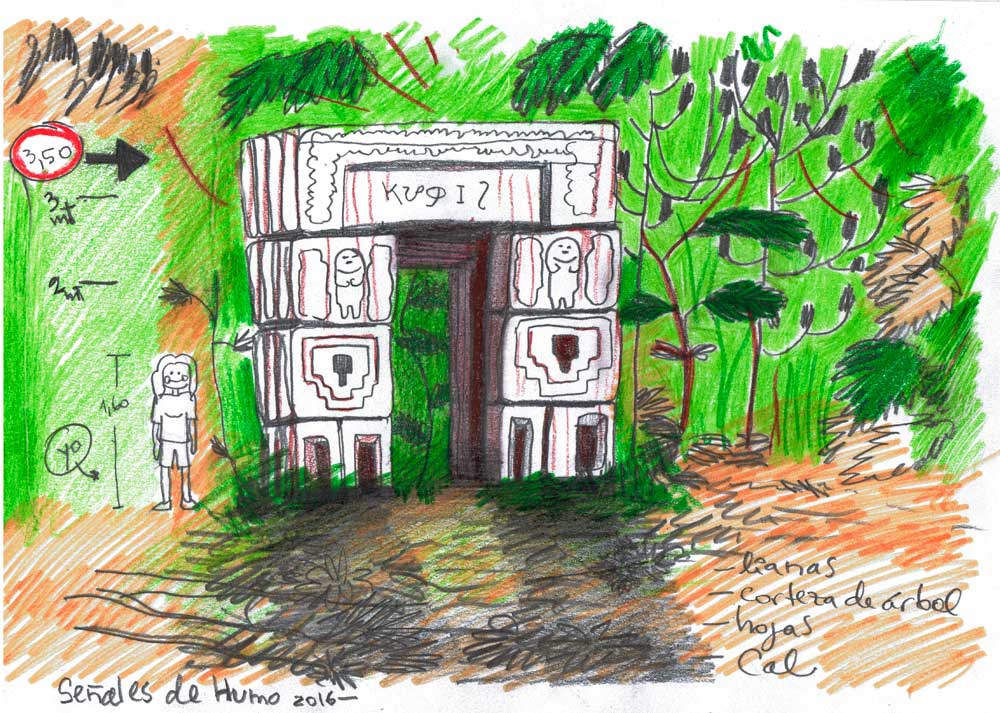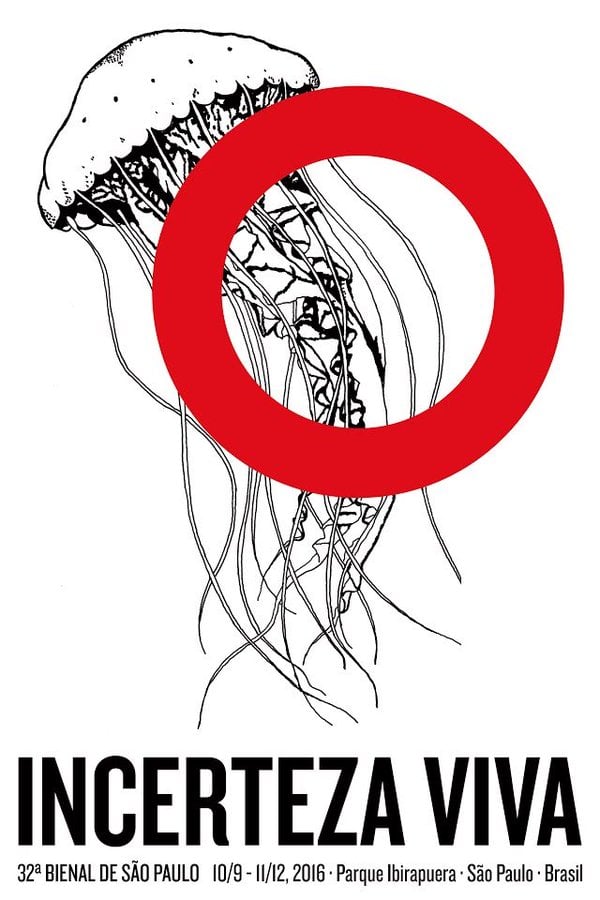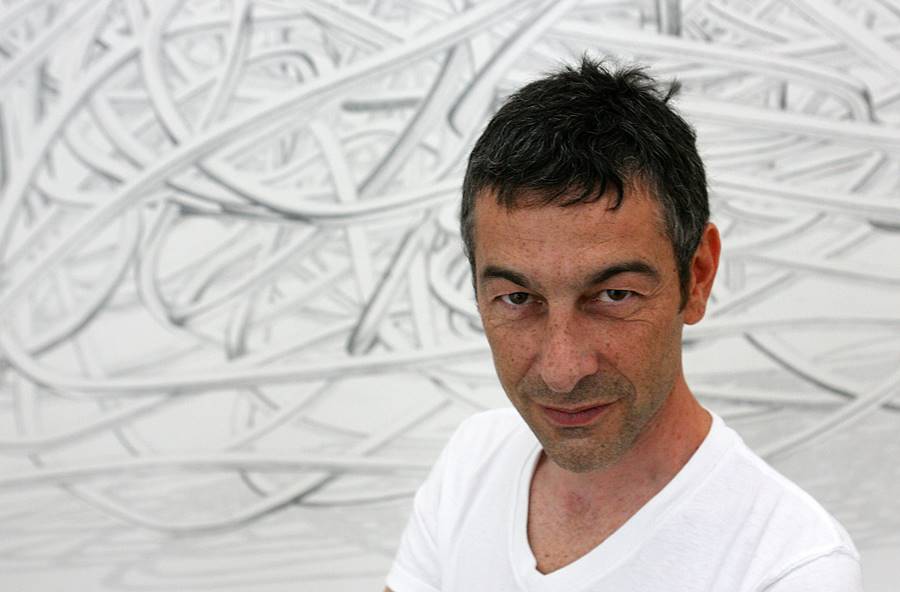Art & Exhibitions
The São Paulo Biennial Goes Neo-Hippie and Post-Apocalyptic
In Santiago, some ominous clues about what to expect from the 2016 event.

Image: Courtesy
In Santiago, some ominous clues about what to expect from the 2016 event.

Christian Viveros-Fauné

In the 2007 post-apocalyptic film I Am Legend, a US Army virologist played by Will Smith and his loyal pooch survive a reengineered cancer cure turned deadly virus to wander alone through an overgrown, weed-choked, deserted New York City to confirm an alarmist Robinson Crusoe cliché: that he is, indeed, the last man.
Take that same hackneyed sci-fi idea, pour in assorted references to Frank Zappa’s musical noodlings, Italian philosopher Giorgio Agamben’s biopolitics, and the radical epistemologies of Gilles Deleuze and Félix Guattari, add a guest appearance by French “relational aesthetics” artist Pierre Huyghe, shake vigorously, and you have the conceit of the 32nd Bienal de São Paulo—as announced last week in Santiago, Chile, by a pair of the show’s curators, the German-born Jochen Volz and the Dane Lars Bang Larsen. Call it a wishful sour.

Pilar Quinteros’s drawing for the 32nd Bienal de São Paulo.
Image: ©Courtesy of the artist.
In Santiago to promote their upcoming biennial—the exhibition runs from September 10 to December 11—Volz and Larsen were joined at the Museo de la Memoria and Human Rights by like-minded theoreticians and several of the show’s artists, among them Huyghe, the Chilean performer Pilar Quinteros and Finnish artist Pia Lindman, whose most recent work involves Colombian shamans. The show’s title is “Incerteza Viva,” or Live Uncertainty. It serves as a neo-hippie festival tent for several catalogs of Whole Earth musings.

Poster for “Incerteza Viva,” the 32nd São Paulo Biennial
Image: Courtesy São Paulo Biennial
Though the curators have yet to announce the biennial’s full roster of 90 artists, they have confirmed some 54 participants, most born between 1970 and 1980. A quick look at the preliminary list reveals largely underknown creators peppered with a few well-known names, including Öyvind Fahlström, Francis Alÿs, and William Pope L. Their challenge come September will be to flavor the bland Moosewood Cookbook recipe served up by the exhibition’s philosopher-curators, who additionally include South Africa’s Gabi Ngcobo, Brazil’s Júlia Reboucas, and Mexico’s Sofía Olascoaga. If a lively show is indeed possible, it will be entirely to the artists’ credit.
According to a December press release, this year’s São Paulo Biennial intends to “explore cosmological thinking, atmospheric and collective intelligence, and systemic and natural ecologies.” In Santiago, Volz did his best to clarify some of these mystical motifs. “We want to embrace incerteza,” he said about the upcoming exhibition. “We want to think about it’s potential and learn how to live with it disassociated from notions of fear and especially crisis.” After Volz and Bang took turns mystifying the crowd, a youthful Quinteros put things on firmer footing: “Not having information is also an opportunity, it gives power to the imagination.”
The flip side of embracing uncertainty for today’s speculative intellectuals, is the demonization of certainty—theory-speak for Enlightenment rationalism—specifically when it comes time to confronting what the biennial literature calls “the big questions of our time, such as global warming and its impact on our habitat, the extinction of species, and the loss of biological and cultural diversity, economic and political instability, injustice in the distribution of the earth’s natural resources and global migration, among others.” Implied but largely absent in this right-thinking litany is the human subject. In I Am Legend terms, imagine an exhibition made not for Will Smith’s character but for his dog, Samantha—in poverty-stricken, corrupt, Zika-infested Brazil.

French artist Pierre Huyghe stands in front of one of his pieces, Noeud 01 for Streanside Day on display at the Tate Modern in London, 4 July 2006.
Photo: JOHN D MCHUGH/AFP/Getty Images.
Besides cultivating a maddening indifference to the practical problems affecting the human populations of developing countries like Brazil and Chile—the conference breezily took place in a museum whose director recently resigned after being implicated in a countrywide sweep of political corruption—“Live Uncertainty” taps into a strain of speculative realist thought that has found trendy purchase among global curators in the wake of dOCUMENTA (13). The widely misunderstood “turn towards objects” in art and philosophy has led to thousands of pages of opaque pronouncements and hundreds of head-scratching exhibitions featuring consciousness-raising rocks, plants, and carvings. It has also led to some incredible new age howlers.
In Santiago, a U.S.-based anthropologist coined the term epistemological-cide to describe what the West does to native cultures—though the Eurocentric esoterisms parroted by the academic and the biennial curators somehow remain immune to identical charges. Not a quarter of an hour later, the art historian Yann Chateigné delivered himself of a pair of prize pseudo-concepts. The first concerns the idea “xenochrony,” a neologism coined by Zappa to describe what, for all intents and purposes, is run-of-the-mill sampling. The second involves a more frontal and indiscriminate attack on art past, present and future: “visualism is imperialism.” It was like dialing back to the guilt-ridden intellectual vapidity of the 1980s and hearing tree-hugger Robert Bly spout motivational nonsense all over again.
![Participant wearing Player (2010) with Human (2012) [the dog], alongside Zoodram 5 (2011), during the opening of "Pierre Huyghe" at LACMA](https://news.artnet.com/app/news-upload/2014/11/lacma-pierre-huyghe-dog-and-man.jpg)
Participant wearing Player (2010) with Human (2012) [the dog], alongside Zoodram 5 (2011), during the opening of “Pierre Huyghe” at LACMA.
Photo: Ben Davis.
Thankfully the presentation’s last act made clearly visible the 32nd São Paulo Biennial’s coming darkness. Describing the closing speaker as a “new Chilean artist,” Volz invited the formidable Pierre Huyghe to the stage. Huyghe, who has been living and working in Santiago for over a year, motioned to his young wife and newborn child, and proceeded to introduce two of his best-known films. Both were highly poetic, plotless, and starred animals instead of human actors in post-apocalyptic settings—the first in an abandoned restaurant in Fukushima, the other in the compost area of Kassel’s Karlsaue Park.
The second film proved especially baffling, as a white dog with a leg dipped in pink paint wandered the bug-infested grounds while all sorts of extra-human critters disported like ghouls in a Brueghel painting. And that’s when I remembered a cryptic comment Huyghe had made on the eve of his 2015 LACMA survey to The Art Newspaper: “I don’t want to exhibit something to someone any more. I want to do the reverse: I want to exhibit someone to something.”
I hope Brazil’s dogs, bees, plants, rocks, and monkeys enjoy the show.